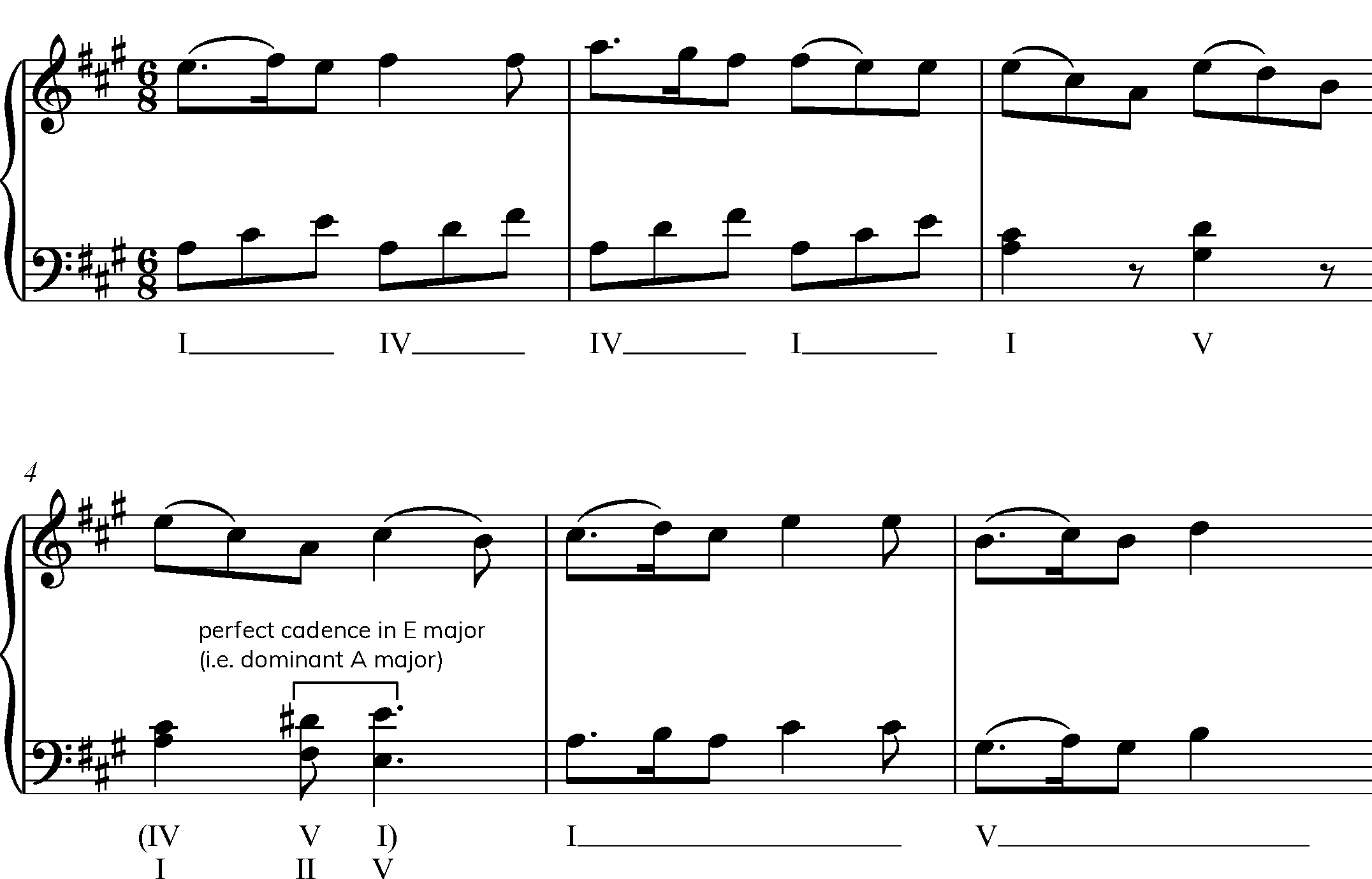B6 | Additional modulation
- In this component you will consider modulation to the key of the dominant, subdominant, relative minor and dominant of the dominant
- By doing so, you will deepen your understanding of methods that develop your musical material.
Modulation is an important part of structure as it enables the composer to plan contrasting sections with a view to tonality. This creates variety and unity within the form.

Experiment by creating a bass part which draws the harmony to a temporary key or keys (= tonicisation). Then look at how the composer himself has harmonised the melody.
Listen to how Mozart uses tonicisation in the quotation below. He colours the melody by giving the expression a lift towards the middle of the phrase. The quotation comes from the opening movement of his Piano Sonata (K.331). Figure 1 shows the melody alone.
Fig. 1
Sonata in A
Mozart
tonic = A major

tonicisation in E major (i.e. dominant A major)

Fig. 2

The D# in the bass part modulates the harmony to the key of E major for half a bar, therefore is said to tonicise rather than modulate, as the harmonic change occurs only for a short while.
In order to modulate completely the composer must confirm the new key in a number of ways. The new key must be prepared and confirmed as the new tonic. The usual modulations during the Baroque and Classical periods were:
|
Tonic to |
dominant |
|
Tonic to |
subdominant |
|
Tonic to |
relative minor |
|
Tonic to |
dominant of the dominant |
Exercises
Composition task
Compose an original piece of approximately 4-8 bars for string quartet. You should attempt to use harmony which:
- Tonicises or
- Modulates to one of the keys discussed above.